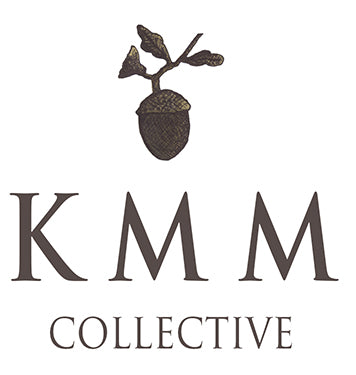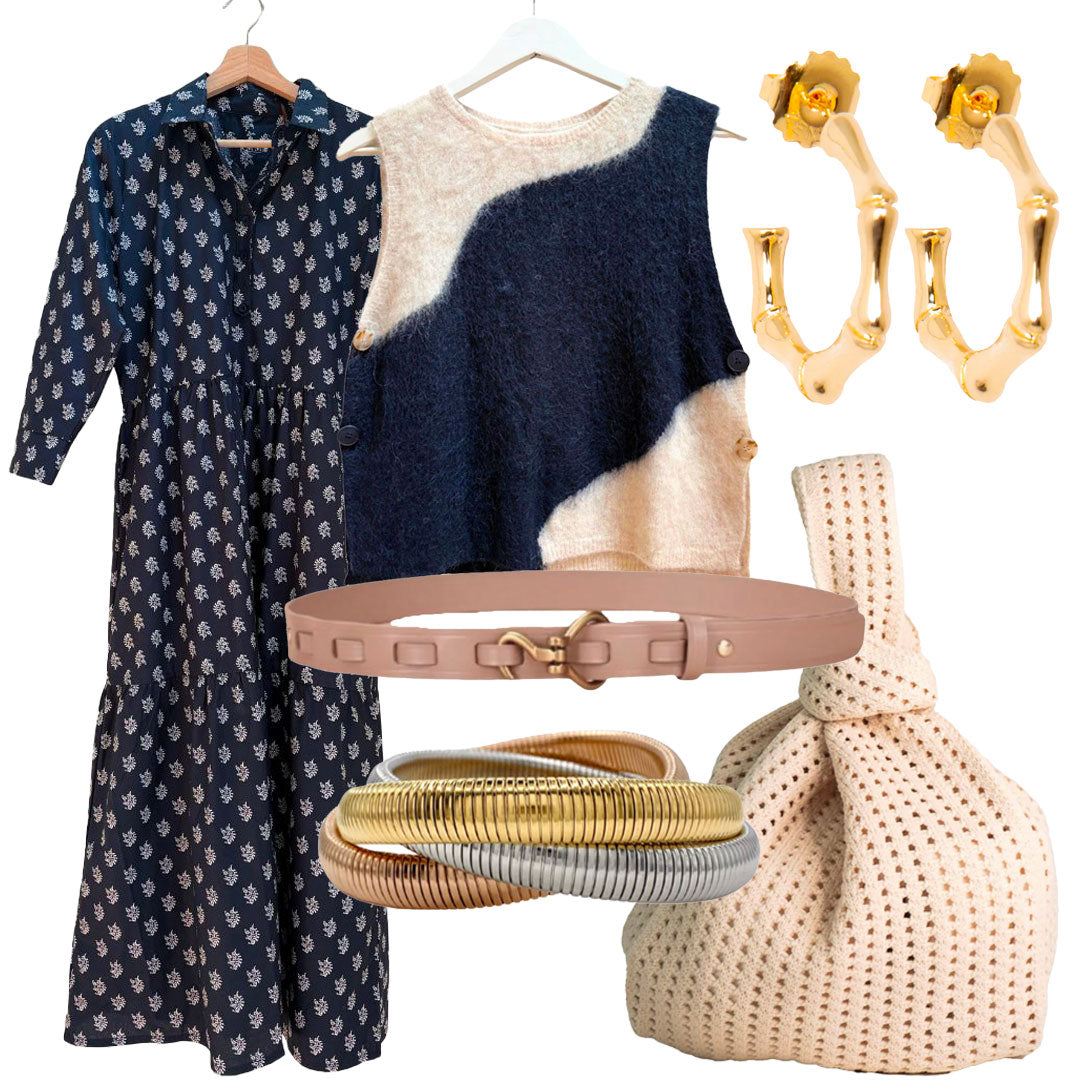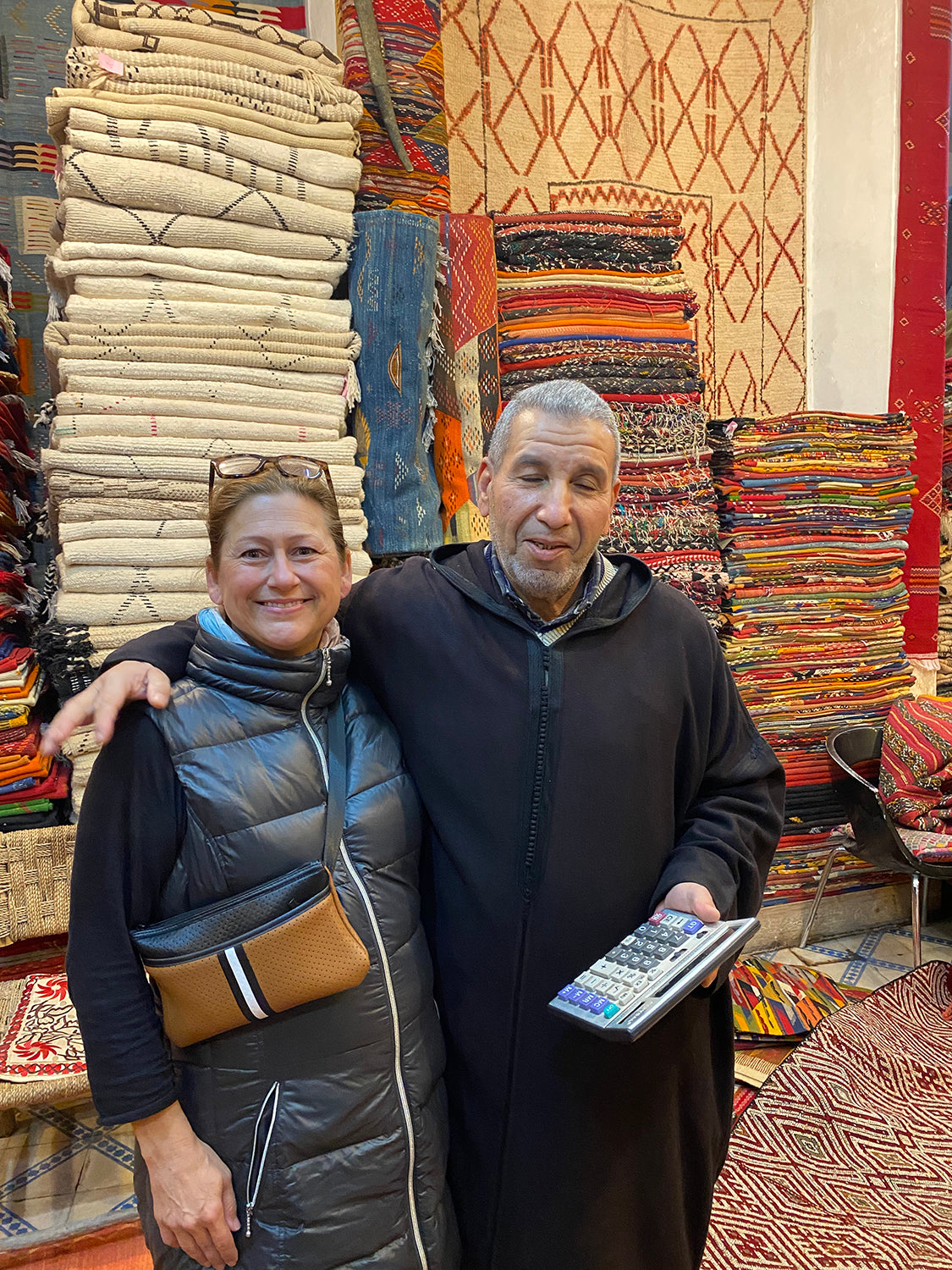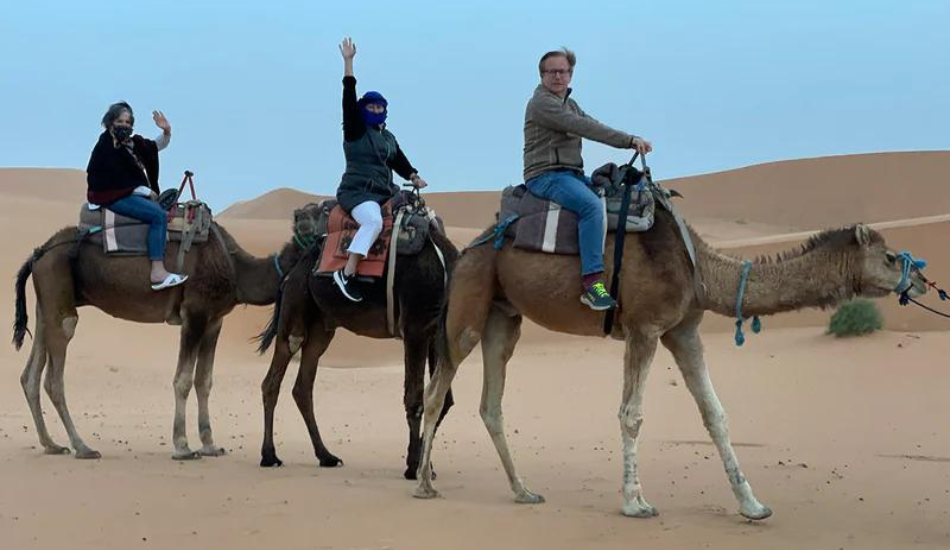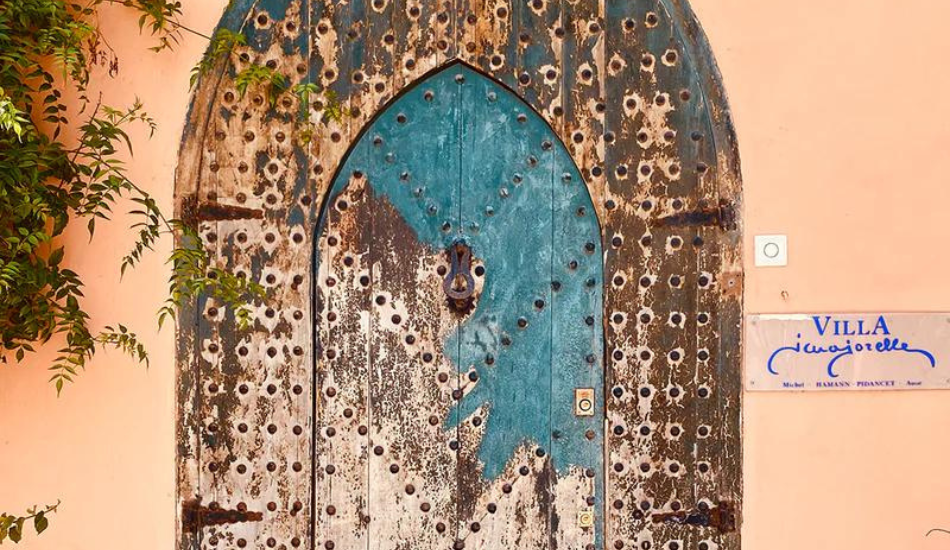
Marrakech 2022

After an eight hour flight from Atlanta to Paris and a three hour flight from Paris to Marrakesh, we were intercepted by our driver for the next ten days, Hisham.
We stayed in the Medina, which means old part of town. Cars aren't typically allowed inside the medina unless it is early morning before the main square gets busy so Hisham parked outside the walls of the medina and we began making our way through the well known square called Jemma El Fna. We arrived around five pm on a Saturday so the square was beginning to fill up. Vendors set up shop selling olives, fruit, and traditional Moroccan food and the snake charmers and drum players take their places as well.



After walking through the square, we entered an alley way which led to smaller alleyways and tiny corridors. There are stalls with vendors selling slippers, rugs and confections. You will also pass many doors, some elaborate but most are not, and you have no idea what is behind those doors. Some are personal dwellings, some are galleries or rug shops and some are beautiful riads.


You never know what you will run in to in these long narrow hallways.
If you are unfamiliar with the word riad, or ryad as it is mostly spelled in Morocco, ryad means garden in Arabic. A ryad is a traditional Moroccan home that is built around a garden or courtyard. The name of the place where we stayed is Ryad Ilayka.

When that door opens, you enter a beautiful courtyard full of palm trees, banana trees and other varieties. There are rooms on all four sides of the courtyard. In this case, two of them are guest rooms, another a large sitting room/library and the fourth wall contains a niche filled with banquettes.


It is customary in Morocco to serve hot tea and some snacks upon arrival. Small bowls of different nuts and olives were delivered to us in beautiful ceramic bowls and we were encouraged to relax. This niche above is where we relaxed each afternoon.

A view of the courtyard and Marrakesh from the upper terrace.



There was a small pool on the terrace above but it stays covered when not in use so I didn't take a picture.


The tiles all over Morocco were all different and equally beautiful.

The entry to our room.

We slept with the windows open each night because of the cool temperature and we awoke in the early morning to the muslim call to prayer. One person recites the call to prayer 5 times daily from the neighborhood mosque and it echoes somberly but beautifully throughout.

Our bathroom at Ryad Ilayka

Our first night in Marrakech we ate at Al Fassia which is a restaurant but also a riad. It is one of the best rated and most recommended destinations in Marrakech because of the atmosphere and delicious food. Al Fassia, which is owned by two women, the Chaab sisters, is the first restaurant in Morocco to employ only women to work in their restaurants. There are two locations, one in the Medina and one in the new part of town.

We had couscous, lamb kafta and vegetables and it was delicious.
On our first day, started with a beautifully set table, jams, honey, breads and cakes. Bread is served at every meal, it is very inexpensive and it is a large part of the Moroccan diet. The cakes are similar to our muffins with different fruits each day. A large part of Morocco's agriculture is strawberries, oranges, and olives.


This flatbread was served almost everywhere we stayed across Morocco and you can watch vendors making it in the souks.

Fresh orange juice and orange blossom honey are also served with every breakfast and the coffee was amazing too.
We scheduled an historical tour of the Medina. Our first stop was the Kotobia Mosque which is the largest in Marrakesh at 77 meters tall.


I wore this Tribeca caftan dress all over Morocco, it was the perfect weight, the perfect coverage and the pockets came in handy. Also it was so easy to have laundered by the riad, because it can be washed and dried by machine.

Next was the Bahia Palace.


The entire palace was decorated with hand carved stone and hand painted wood.









Another fun fact about Morocco is that storks are everywhere. On tops of buildings in cell towers, and they are not to be disturbed. They are considered a holy animal.


Next we visited the Saadian tombs.

Remains of members of the Saadi dynasty are housed here. After the fall of the Saadi dynasty the tombs were sealed and weren't discovered until 1917.
The rest of this day was spent walking around shopping and sight seeing.


Spice shops.

The tins used for spices are different in each city but all piled high.

The same goes for potpourri.

Bundles of yarn ready to be distributed. They call this wagon a chariot and chariots are used for many things including getting luggage from a van to a riad.
You are not encouraged to take pictures inside the souk, I asked a few people for their permission but they said no. I was, however, able to take photos of these bags for reference because the vendors wanted me to order more once I returned to the US.

The souk is divided into sections like leather, clothing, rugs, and metals, which is where you could buy lanterns of all shapes and sizes made of brass and copper. There is vendor after vendor of the same item and same design and if you are with a guide he will take you to the people that he knows. Otherwise, you could spend half a day if not more in one area.

Babouche slippers in every style and color.

There are jackets, caftans, tunic tops, all unique, some with complex and colorful embroidery and some with very simple tone on tone. Some affordable and some very expensive depending on the amount of work.
Here are two more interesting things we learned about life in the medina.
Number 1.
Some of the doors have two separate knockers or bells which immediately indicates it is a personal dwelling. One bell/knocker is for deliveries or repair people while the other is for family members. If the bell for a delivery person rings, the woman of the house knows she has to layer up her clothing but if the family bell rings, she doesn't have to completely cover her body.
Number 2.
There is a neighborhood baker within the medina.

There is a room with a wood fired oven and walls lined with shelves. A lot of families make their own dough and bring it to this man for baking. A family member will drop off their dough, they have their own spot on one of the shelves, and pick up the baked bread later in the day.

On our second day in Marrakesh, we went to the YSL museum and the Jardin Majorelle. What I didn't realize is that Pierre Bergé's Berber Museum is also there, located in the space that was Jacques Majorelle's painting studio. If you like tribal clothing and accessories, as I do, you would love this place. There are mannequins dressed in the traditional Berber garb made of beautiful textiles along with head dressings and jewelry, artifacts and photographs. The YSL museum, is filled with mannequins dressed in caftans and evening gowns, there are accessories and drawings along with fabric swatches also on display. Guests aren't allowed to take photographs inside the museum so, sadly, I don't have any photos to show you.
The book store was equally impressive and had books I had never seen before. Here are a few that I picked up:

Entres Nous: Bohemian Chic in the 1960's and 1970's by Mary Russell


https://www.amazon.com/Desert-design-anglais-Arnaud-Mauri%C3%A8res/dp/2366721838
The Jardin Majorelle is the garden designed by painter Jaques Majorelle. Majorelle worked on this garden for about 40 years and in 1947 he opened it to the public because of the expensive upkeep. The painter was then forced to sell the garden and land after he and his wife divorced. After falling into disrepair and facing destruction, Yves Saint Laurent and Pierre Bergé purchased it and restored it. Yves' ashes are sprinkled throughout the garden.

The famous blue walls in the Jardin Majorelle.


The monument for Yves Saint Laurent and Pierre Bergé inside the gardens.
That's a wrap on Marrakesh, stay tuned for our drive through the desert.
